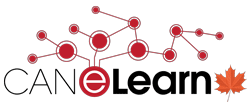In addition to the annual reports, the State of the Nation research team also develop policy briefs. These reports represent research on topics related to K-12 e-learning in Canada beyond the content contained in the annual reports, and are released as separate documents. The second of these additional reports was released this past Friday.
The executive summary reads:
“In Fall 2017, the Government of British Columbia (2017) began a review of the model that it uses to fund K-12 education. In the press release announcing the members of the review panel, the Government (2018a) described the goal of the review was “to find a better way to provide equitable and predictable funding to boards of education” (¶ 5). As a part of this review, the government panel released a discussion paper that stated, among other things, that there was “an artificial division in the current model between ‘bricks-and-mortar’ and distributed learning, which should not exist” (Government of British Columbia, 2018d, p. 3).
The purpose of this brief is to examine the nature of distributed learning funding in British Columbia and how that compares to other jurisdictions in Canada and the United States. This brief begins with an overview of the existing funding model in British Columbia with respect to distributed learning. This is followed by a description of how distributed learning is funded and resourced in other Canadian jurisdictions. The brief concludes with an exploration of the research literature related to funding distributed learning, most of which focuses on contexts in the United States.
This brief outlines how distributed learning funding models across Canada generally fall into one of three models. First, the government directly funds and/or resources distributed learning opportunities. Second, individual distributed learning programs charge a fee for students who enroll on a per course basis (often paid for by the school or school district). Third, the government provides direct funding for the distributed learning program through FTEs/CEUs. Interestingly, those Canadian jurisdictions that did fund distributed learning through FTEs/CEUs provided less funding for distributed learning enrollments compared to traditional brick-and-mortar enrollments.
The larger body of literature indicates that the American context generally follows the second for supplemental program and the third model for full-time programs. However, it is important to understand the role of private enterprise in public education with respect to distributed learning in the United States, and the impact this has on the funding of full-time distributed learning programs. There is also the issue of whether the government has the obligation to provide the same funding for public education regardless of the modality that education is delivered. As Ministries of Education across Canada review and revise funding models in their jurisdictions, issues of equity and access to effective learning options must be considered. Funding is a critical driver for educational practice. The research community would serve students and schools well to keep funding models for K-12 education in the forefront of their work.”
The report can be accessed at https://k12sotn.ca/wp-content/uploads/2018/10/DL-Funding-Report.pdf
